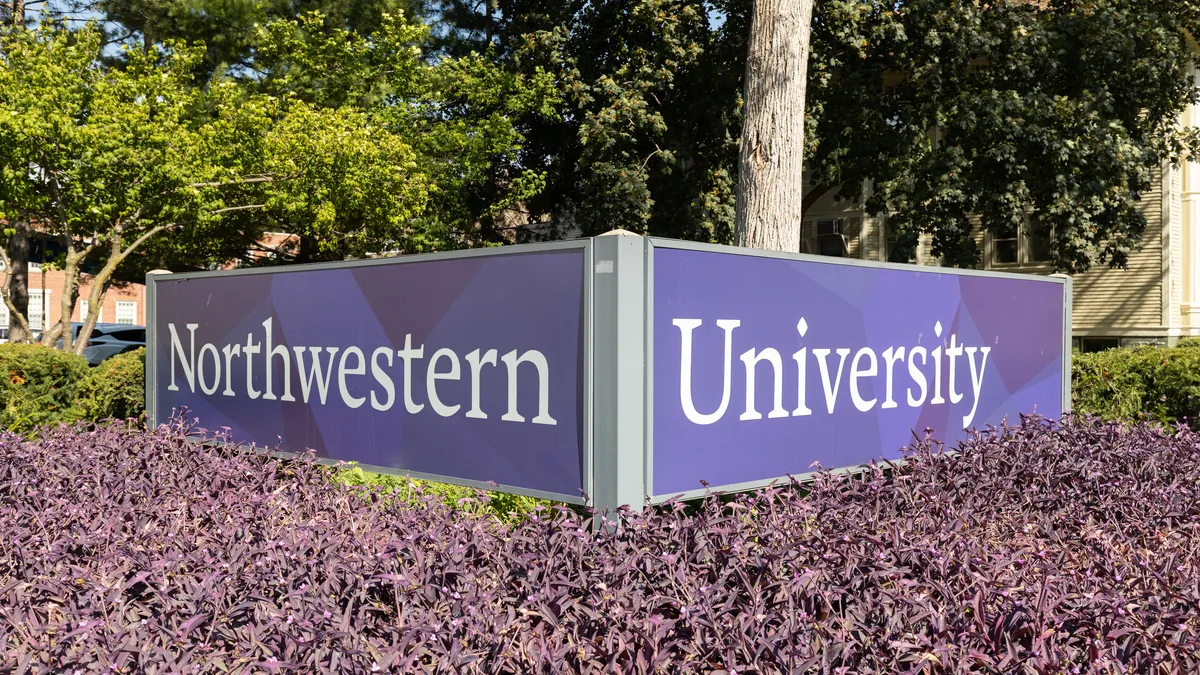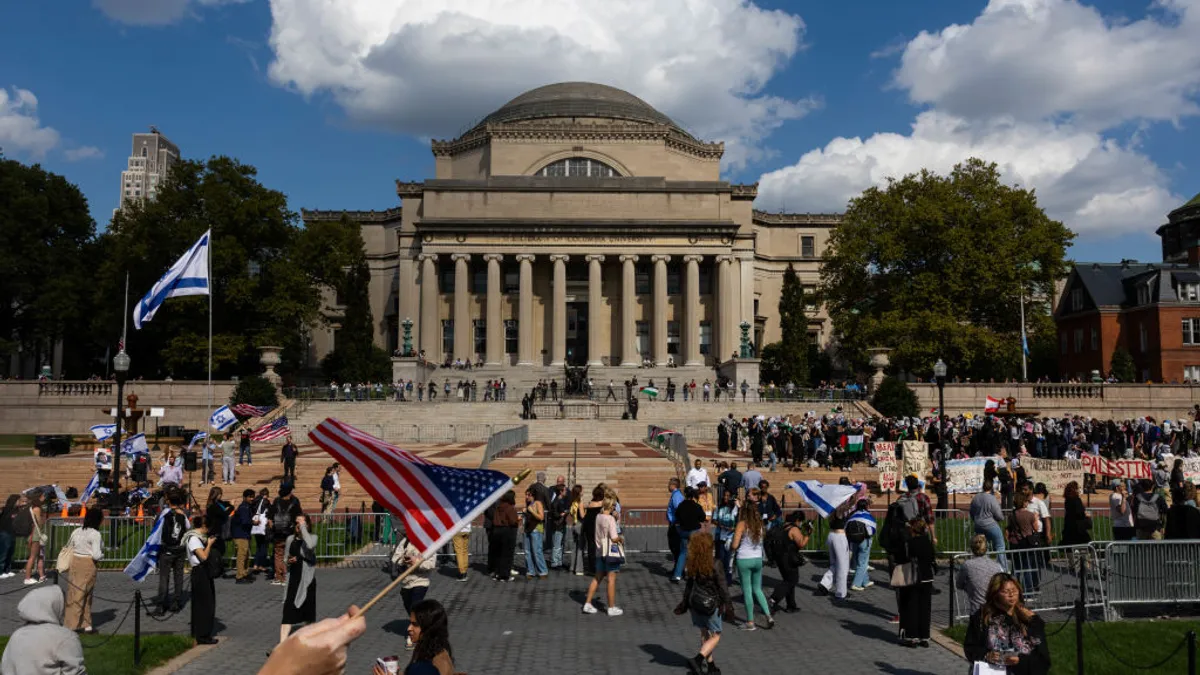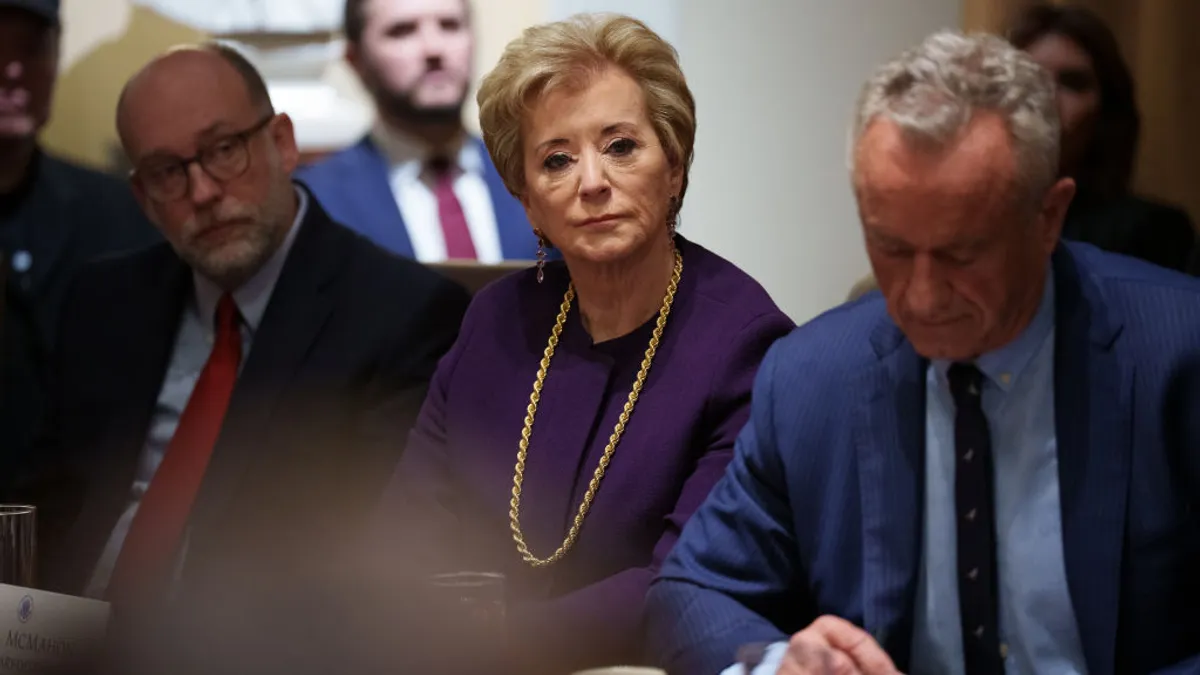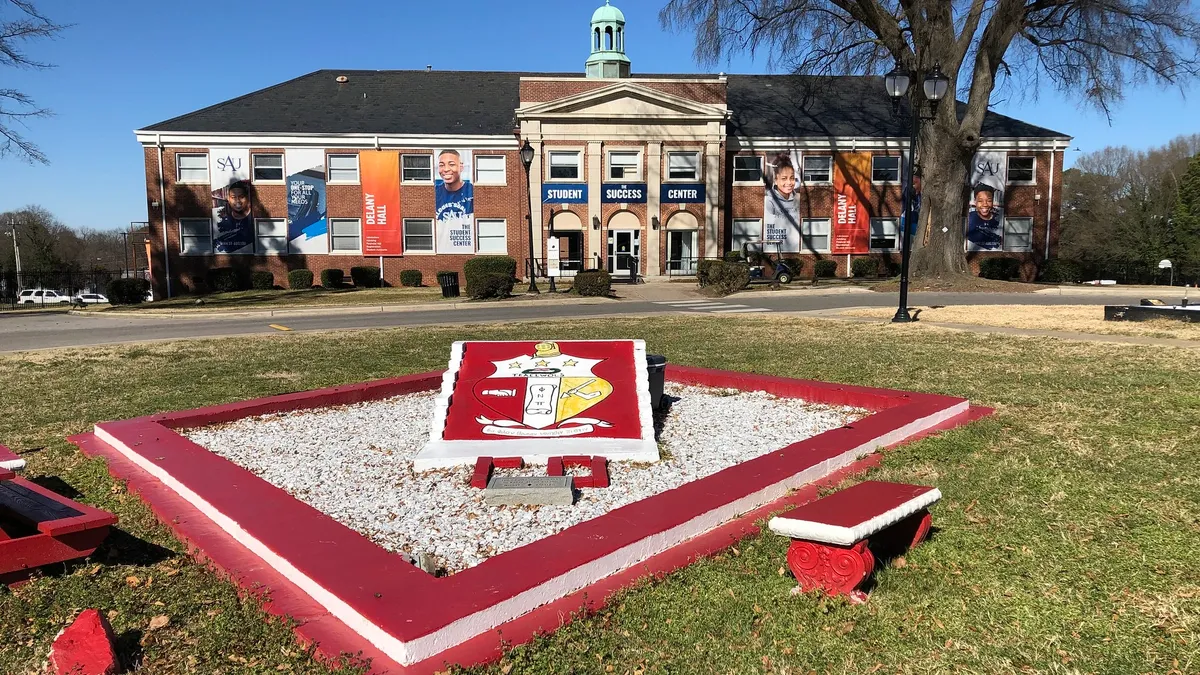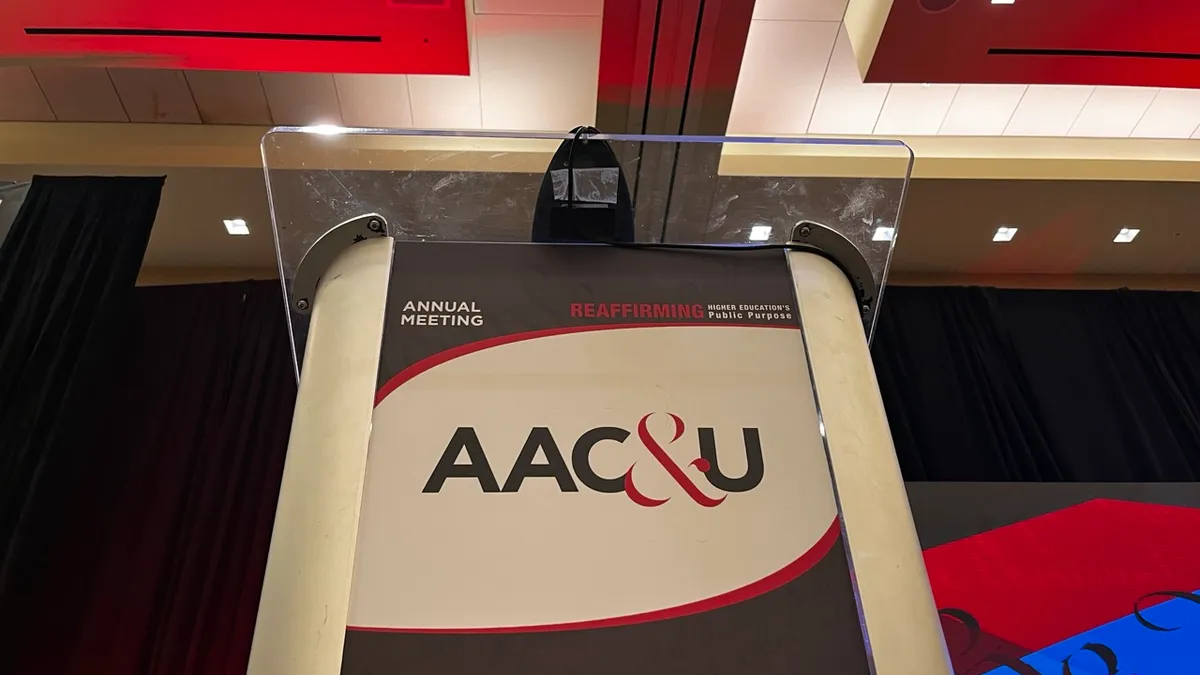Colleges are working to improve graduation rates for underrepresented student groups through changes at the administrative level, like releasing transcripts regardless of student debt, and at the individual level, like encouraging eligible students to apply for emergency funding. Now, a nonprofit organization focused on higher ed trustees wants college boards to take an active role.
The Association of Governing Boards of Universities and Colleges is developing resources for governing board oversight of equitable student success, using a $150,000 grant from the Bill & Melinda Gates Foundation.
Henry Stoever has been president and CEO of AGB since 2019. Carlton Brown leads its justice, diversity, equity and inclusion practice. Brown is also a former president of Clark Atlanta University and Savannah State University, two historically Black institutions in Georgia.
The two AGB leaders spoke with Higher Ed Dive about why equitable student outcomes matter and how engagement from college boards can affect the success of an institution's diversity and inclusion efforts.
This interview has been edited for brevity and clarity.
When did AGB start incorporating equitable student success into its goals?
HENRY STOEVER: When I started, one of the first things we did with the AGB board was to review and sharpen our vision and our mission. During that process, we intentionally included equitable student success as one of the outcomes that boards need to oversee. We have working groups across the AGB staff and with our consultants that meet at least once a month to deepen our own knowledge and understanding of these important values. The work has to be internal and external. If you don't do both, the likelihood of success is going to be placed in jeopardy.
What questions should boards ask themselves if they want to focus on student outcomes?
CARLTON BROWN: They range all the way from whether enough academic supports exist to how the curriculum is structured. What is the faculty's disposition? What are the support structures out of the classroom? How do we enable a strong enough sense of belonging that students feel like part of the college's family?
It's looking at every aspect of the process. It's tough work, but everyone I interact with believes it's possible.
When did you first reach out to foundations for support?
HENRY STOEVER: About a year ago, we started talking to grantmakers, in this case, the Bill & Melinda Gates Foundation, about how we could work together. Their work has been very comprehensive and incredibly thorough, but it didn't include the governing board, something they recognized.
CARLTON BROWN: We're kind of embedding ourselves with the Gates Foundation to make sure we can incorporate all that they have learned so far. Their work has been oriented toward administrations, faculties and staff. Translating those concepts for a board audience is a big part of the lift we're engaging in.
What is the timeline for the project?
CARLTON BROWN: First, we're developing the curriculum and the tools, keeping in mind that there is a tremendous diversity in opinion across boards. This is journey work. It's a long journey for the board, but it is an individual journey for each board member. Next, we'll test it with some of the Frontier Set institutions that the Gates Foundation has been working with. That's through August. We're hopeful that, once all of that work is done, we will continue our work together past that time.
What are the challenges of getting boards to take on equity?
CARLTON BROWN: One of the issues that we've been dealing with is that boards have not always engaged on topics, even when their institutions do. For an institution to truly transform, the board has to be knowledgeable and supportive and, in some cases, leading parts of this work. It requires conversation on how the board looks at itself and putting an equity lens on its structures, processes and membership.
To what extent do you believe institutions are responsible for the success of their students?
HENRY STOEVER: One of the primary reasons colleges and universities exist is to educate students. There are other goals of course, focused on research, innovation and community engagement. But students are at the core.
CARLTON BROWN: For too long, the institutions were simply saying, "If we can get our students of color to graduate at the same rate as our White students, we achieve equitable student outcomes." But if you have a 62% graduation rate, what have you really accomplished?
What we mean by equitable student success is that everything that can be done inside of an institution to maximize the capability of each and every student is what ought to be done.
HENRY STOEVER: I would go as far as saying, if an institution enrolls a student, whether it's a parent, a grandparent or a young student, the institution should make all efforts to financially help enable that person to get through the program.









